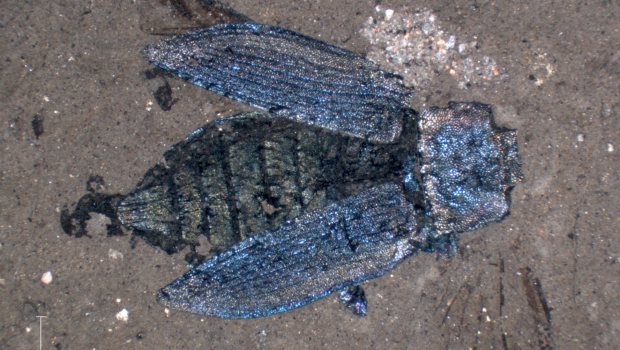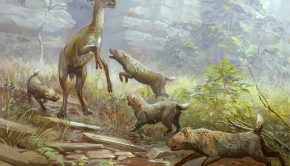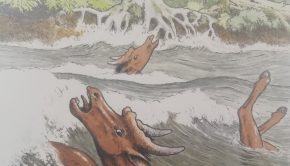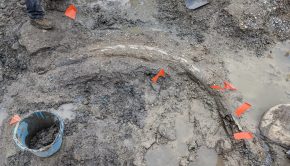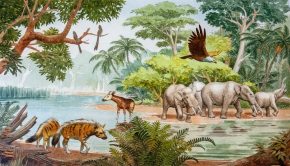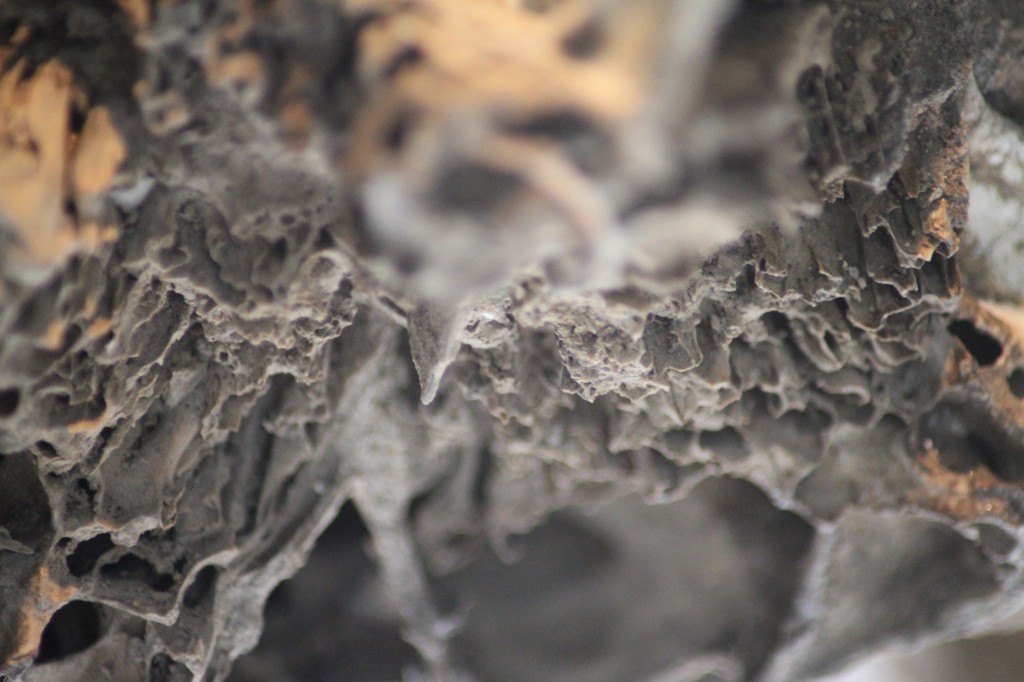Episode 7: Colouration in fossils
Animals and plants use colour for a variety of reasons including absorbing solar radiation, camouflage and communication including sexual display. In living organisms, colour can be produced by many different methods. What is true of colouration today is also likely to have been so in the past, however because the fossilisation process replaces tissues with minerals, finding hints of colour in fossils is very unlikely. There are however certain colour producing structures that can survive the fossilisation process. We visit the University of Bristol to talk to Maria McNamara, a post-doctoral research assistant, to learn more about the preservation of colour in the fossil record.
Podcast: Download (Duration: 33:02 — 45.4MB)
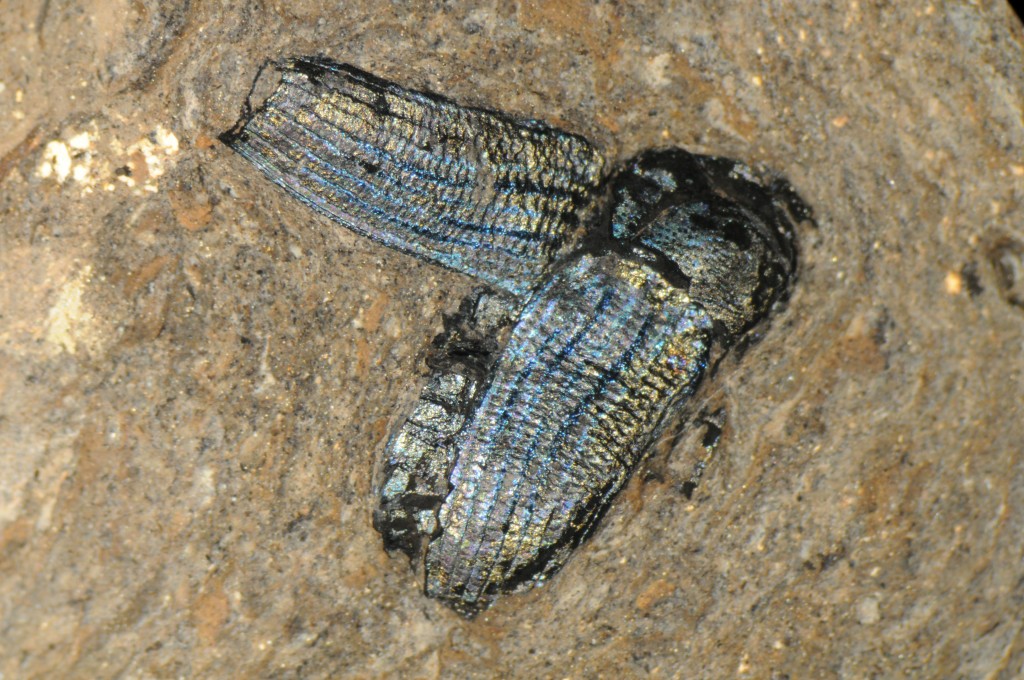
Fossil weevil with metallic structural colours from the middle Eocene (ca. 47 Ma) locality of Messel, Germany. Credit: Uta Kiel, Forschungsinstitut und Naturmuseum Senckenberg.
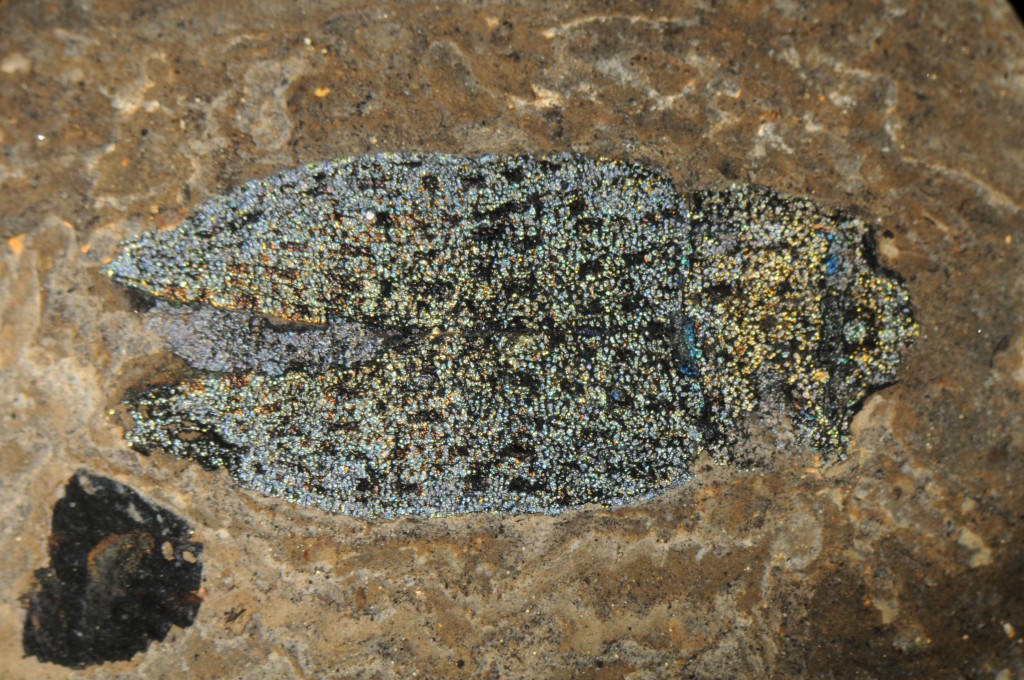
Fossil beetle with metallic structural colours from the middle Eocene (ca. 47 Ma) locality of Messel, Germany. Credit: Uta Kiel, Forschungsinstitut und Naturmuseum Senckenberg.
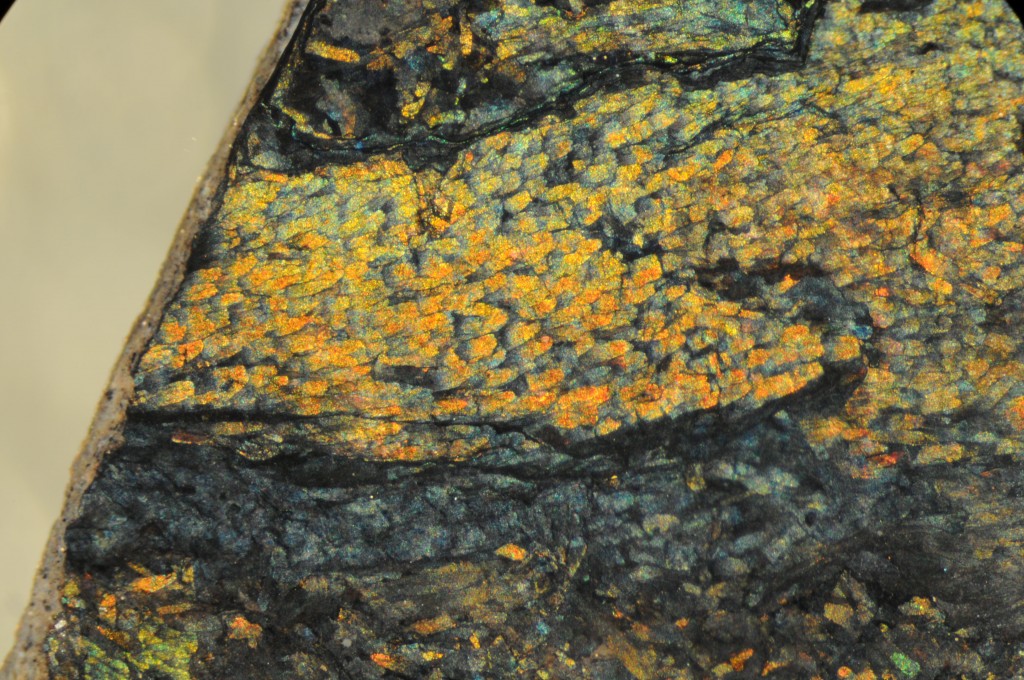
Structurally coloured scales of a moth from the middle Eocene (ca. 47 Ma) locality of Messel, Germany. Credit: Uta Kiel, Forschungsinstitut und Naturmuseum Senckenberg.
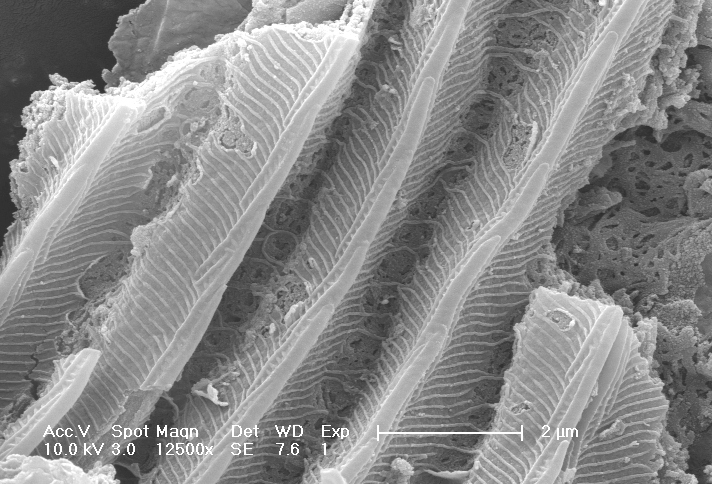
Scanning electron micrograph of the surface of structurally coloured lepidopteran scales from the middle Eocene (ca. 47 Ma) locality of Messel, Germany. The scale surface shows excellent preservation of longitudinal ridges and transverse crossribs and microribs, with perforations in between the crossribs. Each of these structures modifies the iridescent colour produced by the multilayer reflector that is located below the scale surface. Credit: Maria McNamara.
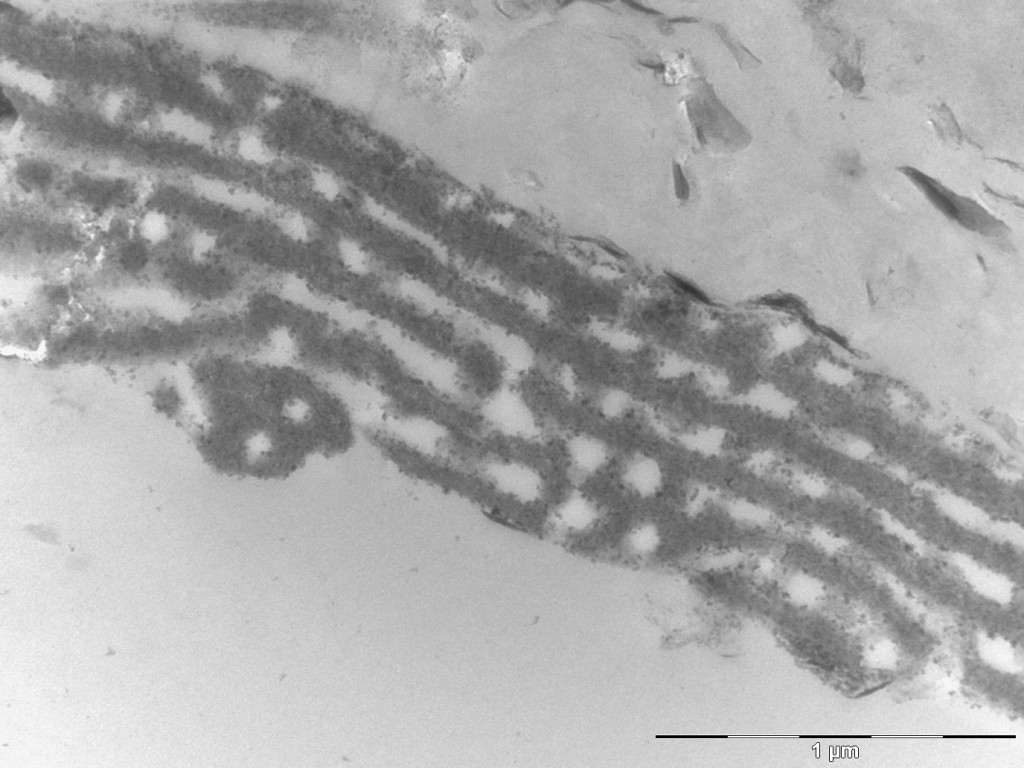
Transmission electron micrograph of a fossil multilayer reflector in scales from a fossil lepidopteran from Messel, Germany. The dark bands are chitinous layers of the scale; the light bands were filled by air in life. Incoming light is scattered coherently by the periodic structure, but the reflected light is not metallic due to the effect of the ribs, crossribs and perforations on the scale surface. Credit: Maria McNamara.
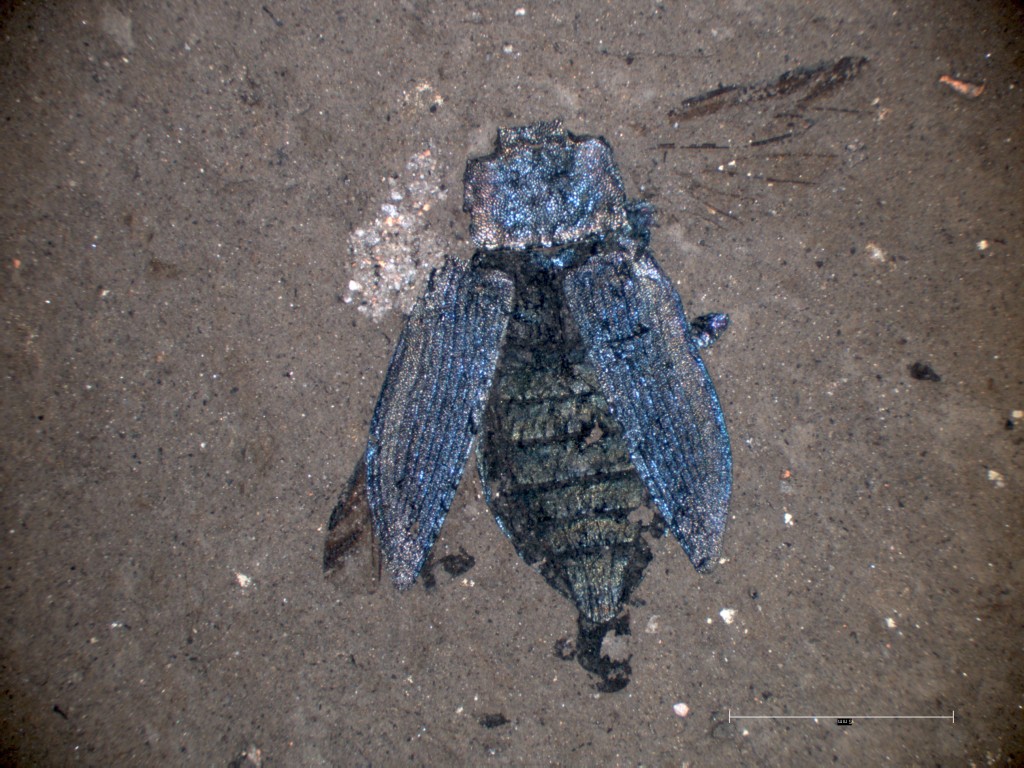
Structurally coloured fossil beetle from the late Oligocene (ca. 25 Ma) locality of Enspel, Germany. Credit: Maria McNamara / Generaldirektion Kulturelles Erbe Mainz.
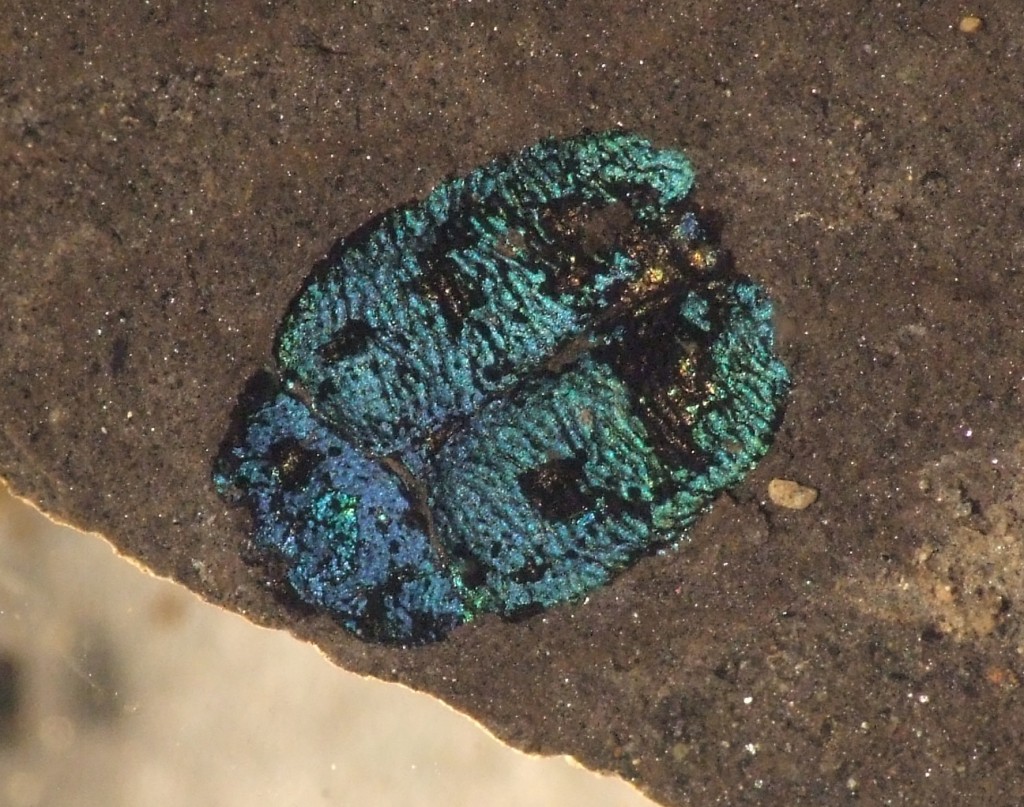
Structurally coloured fossil leaf beetle from the middle Eocene (ca. 40 Ma) locality of Eckfeld, Germany. Credit: Maria McNamara / Naturhistorisches Museum Mainz.
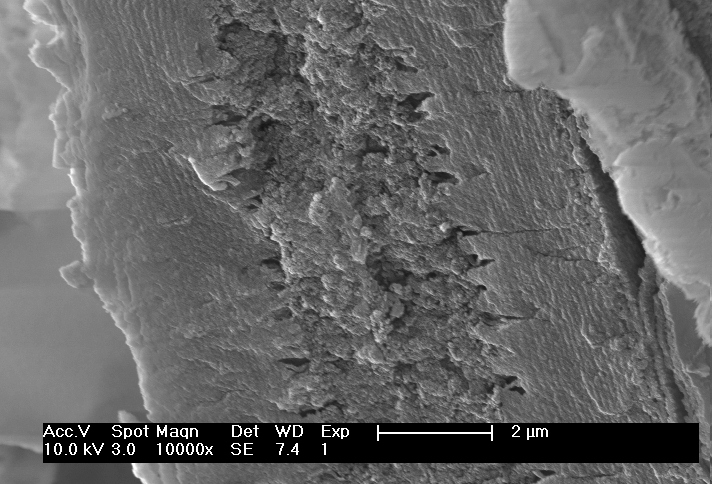
Scanning electron microscope image of a vertical cross-section through the cuticle of a structurally coloured fossil beetle. The thick laminated exocuticle is very well preserved, as is the colour-producing structure – a fossil multilayer reflector – in the outer epicuticle (thick layers visible in bottom right of image). Credit: Maria McNamara.
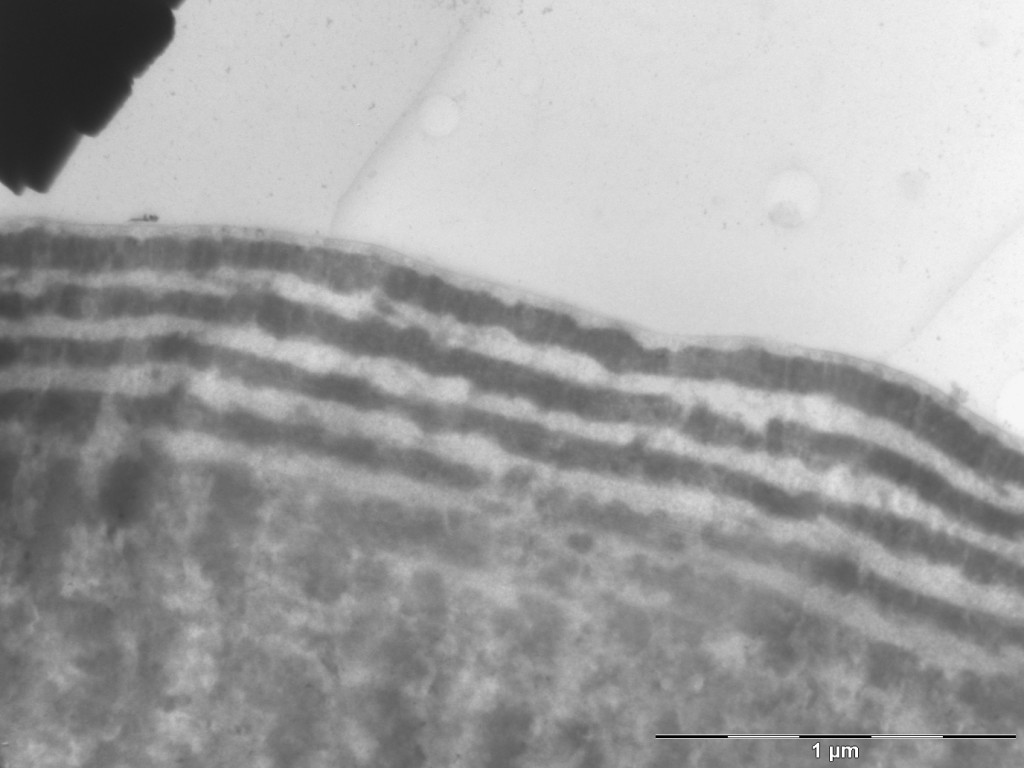
Transmission electron microscope image of a preserved multilayer reflector in a fossil beetle. The dark and light bands represent layers with different refractive index. Incoming light is scattered coherently by the periodic structure, resulting in strong metallic reflection of a relatively pure colour. Credit: Maria McNamara.
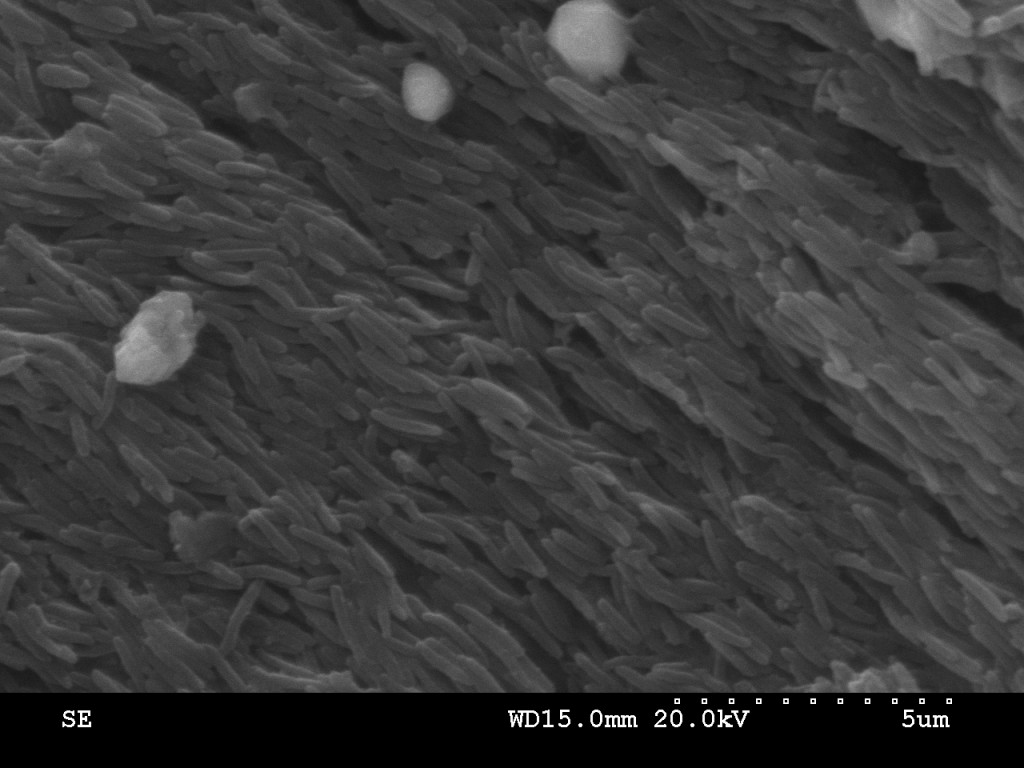
Scanning electron micrograph of fossilised melanosomes in a fossil bird from the middle Eocene (ca. 47 Ma) locality of Messel, Germany. Credit: Maria McNamara.

